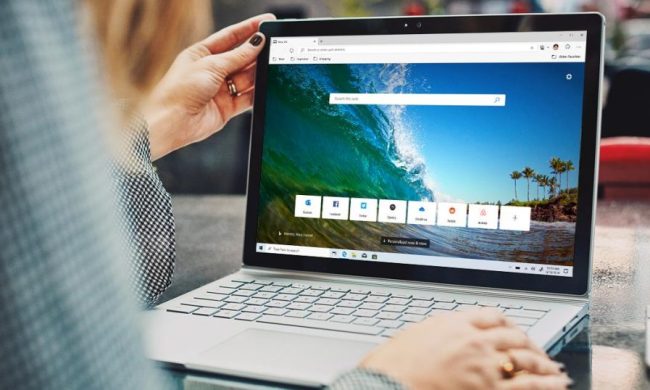Microsoft’s Build developer conference saw updates for products like Azure, Outlook, Teams, and the remainder of the Microsoft 365 services. However, an exciting announcement regarding ARM-based architecture really caught my attention.
Although Apple has stolen most of the spotlight when it comes to switching its products over to the custom ARM-based M1 chip, Microsoft did go there first. The company did it with the Surface RT, and again with the Surface Pro X, but both flopped for a number of reasons that I’ve documented in the past.
This time around, though, things are a bit more promising. Microsoft seems to be putting things back in the hands of developers, and the new approach to ARM feels a lot different.
Giving developers an extra ARM

In the past, Microsoft’s approach to ARM-based chips largely depended on its own hardware like the Surface Pro X. Developers interested in coding apps for laptops and tablets with ARM-based chips (us insiders like calling them Windows 10 on ARM devices) had to buy the same products that you and I can purchase online.
That means that the costs can add up quickly during the development process. But with the new approach announced at Build 2021, Microsoft finally has the mindset of the developer in mind. Instead of buying Microsoft’s own devices to code apps for devices with ARM chips, developers can now choose a new “low-cost” Snapdragon Developer Kit instead.
Though the specific pricing on this kit was not shared, the situation feels quite comparable to something else in the tech world.
Apple’s approach has clearly worked.
When Apple launched its custom M1 chip, it also did something similar. With Apple’s Developer Transition Kit, Apple provided developers access to the hardware needed for their own software before they go about launching anything to consumers.
This allows developers time to learn what’s right, and what’s needed in terms of code changes for their apps — so it doesn’t need to run under the Rosetta 2 emulation and lose out on performance on devices with ARM-based chips.
And it has worked. In the year since the Developer Transition Kit launched, Apple has worked with developers to optimize tons of apps for Macs with the ARM-based M1 silicon. Adobe Photoshop, Microsoft Office, Parallels, and more all run without emulation.
There’s currently a list of over 455 apps that work natively on M1 Macs. This gives me hope that with access to the right hardware, Windows developers can do the same for Windows 10 on ARM.
More reasons to code

It seems as though Microsoft is aware of the success Apple is seeing and wants to give developers more reasons to code for ARM. The reason why? Microsoft is setting examples with its own apps.
At launch, the Surface Pro X did not work with optimized versions of Microsoft’s own apps. The Edge Browser, nope! Microsoft Teams, nope! These apps all ran under emulation, taking performance hits and causing freezes and bugs for some people.
That has changed. Microsoft is showing developers, if we can do it, you can too. It optimized its own apps for ARM-based silicon, including Edge and Teams, with more on the way soon thanks to the App Assure program as part of a partnership with Qualcomm.
Photoshop now runs natively on Windows 10 on ARM.
And it has worked. Perhaps coincidently, Adobe recently came out and announced that Photoshop now runs natively on Windows 10 on ARM. This is one of the biggest apps out there, so there’s hope that others might follow.
Even if direct optimization for ARM-based apps isn’t possible, Microsoft still has the developers’ backs. Windows 10 on ARM originally launched without support for 64-bit apps, which is preferred by most developers. Since then, Microsoft started testing x64 app emulation on certain ARM-based devices.
The scope is limited, but Microsoft is showing developers that it is taking ARM seriously. Just like Apple has done with Rosetta 2 (which runs apps for Intel-based apps under emulation), Microsoft wants to help developers get their apps on ARM-based devices, no matter what.
Qualcomm making improvements

Unlike Apple, which worked on its own ARM-based silicon, Microsoft has a partner in its process: Qualcomm. Since the launch of the original Windows 10 on the ARM platform, Qualcomm has made big progress in the computing world dominated by Intel, whether you see it or not.
Rather than quit due to the lack of success, Qualcomm has remained committed, along with Microsoft, to bringing its Snapdragon ARM-based chips to more PCs. Qualcomm has diversified its lineup of Snapdragon processors for PCs, just like Intel has for its Windows 10 PCs. You’ll find budget processors like the recently announced Snapdragon 7cX Gen 2, and high-end processors like the Snapdragon 8cX Gen 2 5G.
If Microsoft wants to be successful with ARM-based PCs, then Qualcomm is a big part of that process. Things can only get better now that Microsoft is finally taking ARM seriously.


